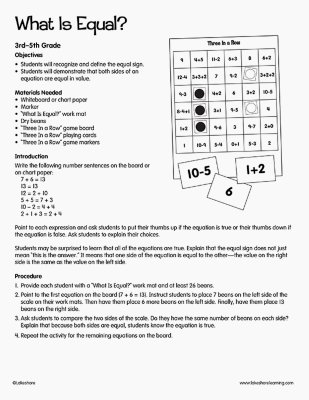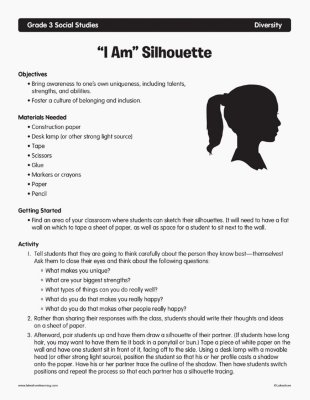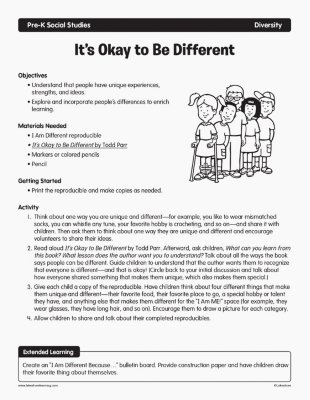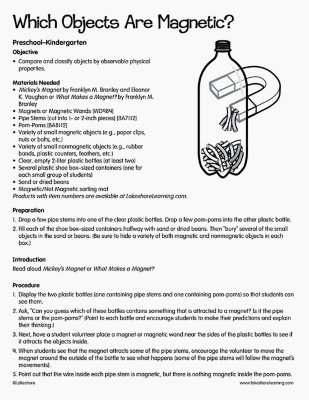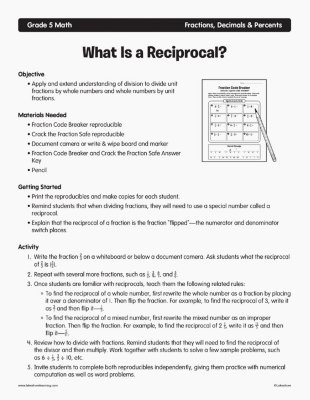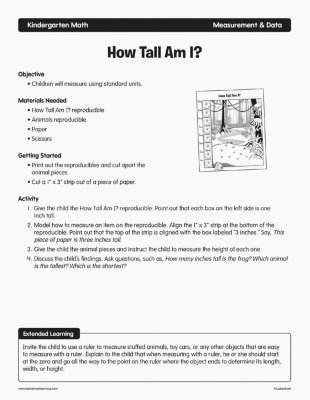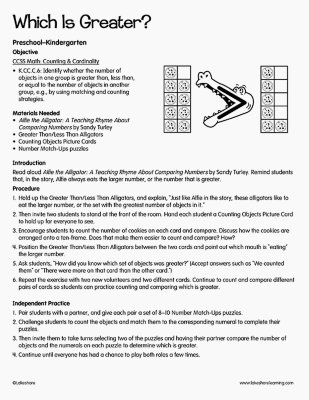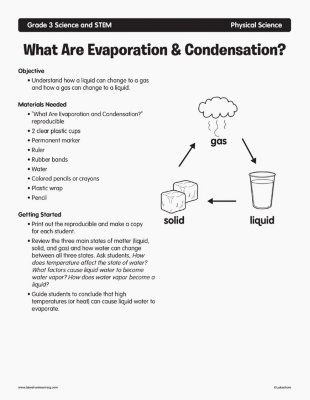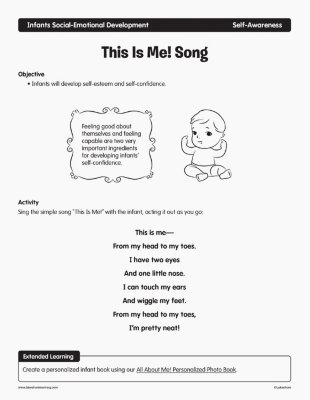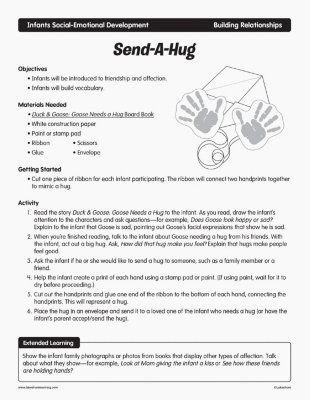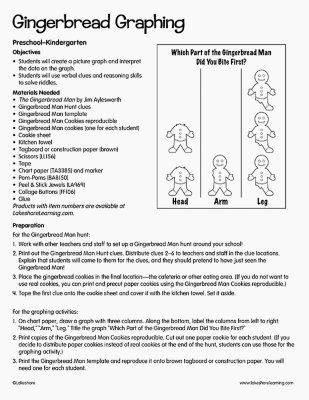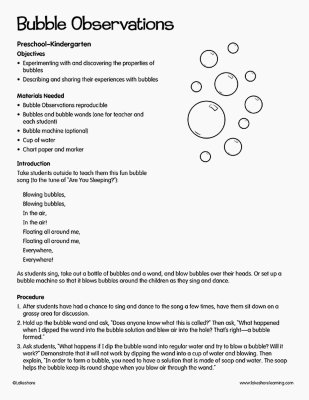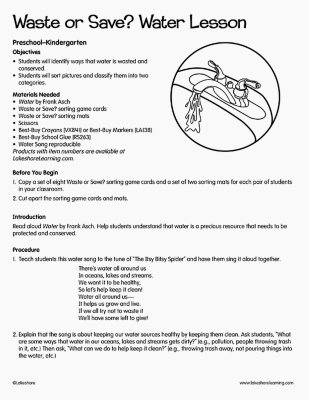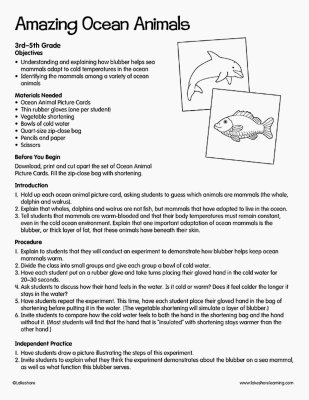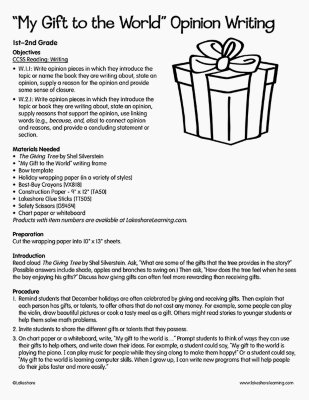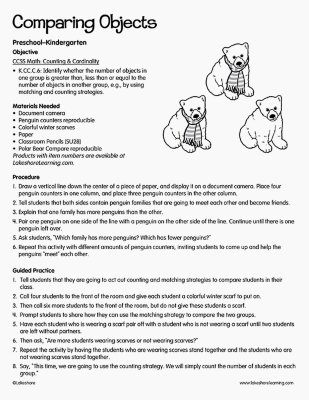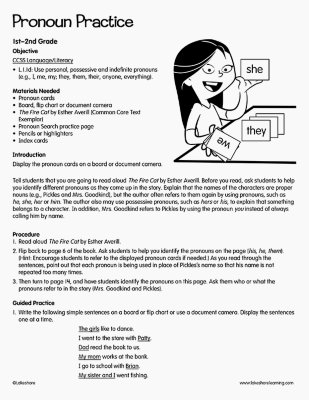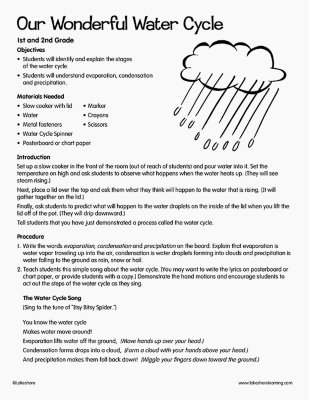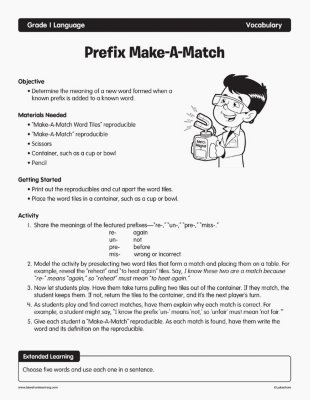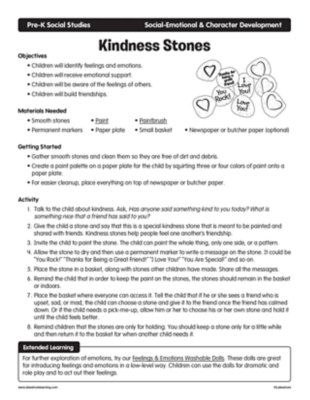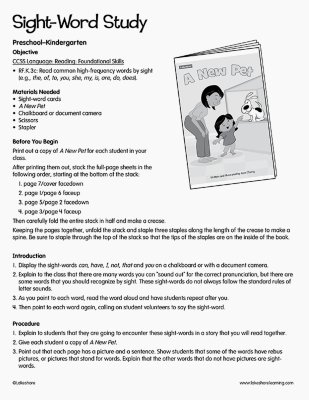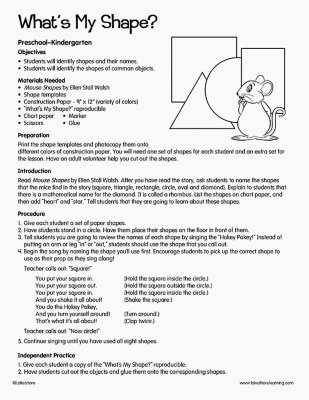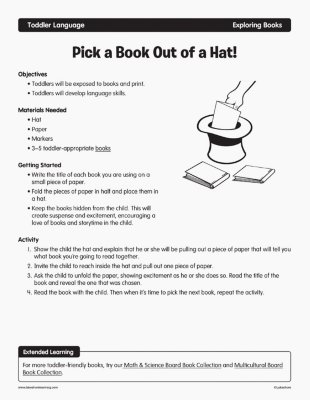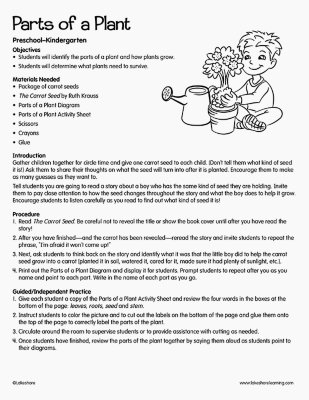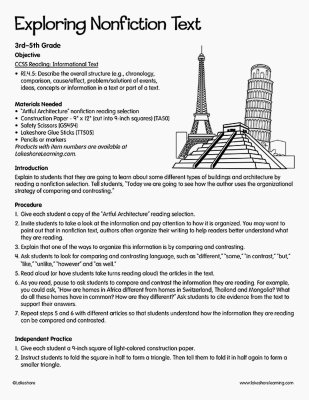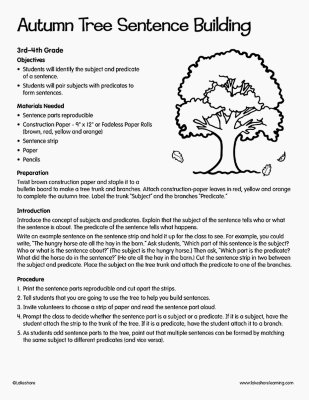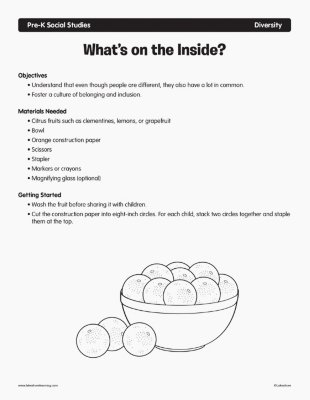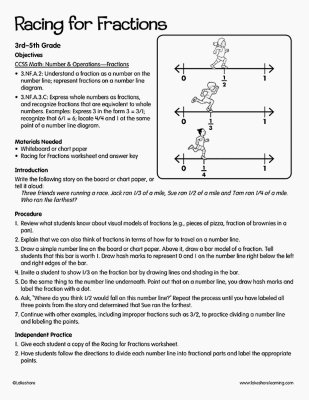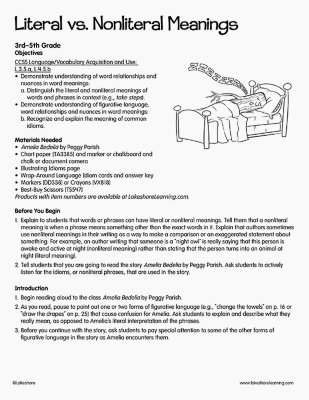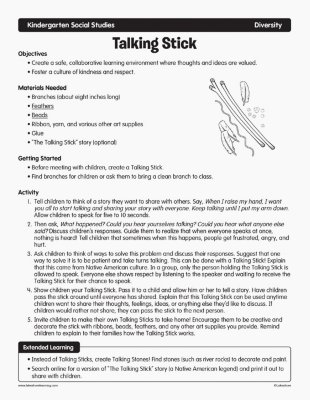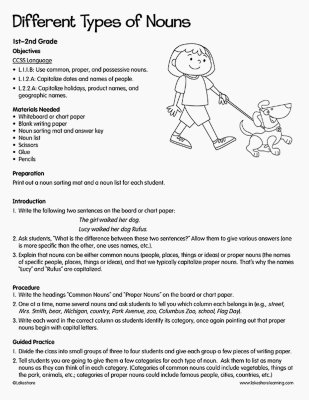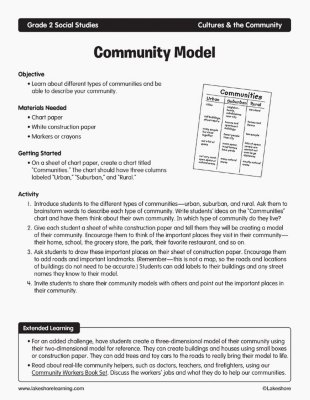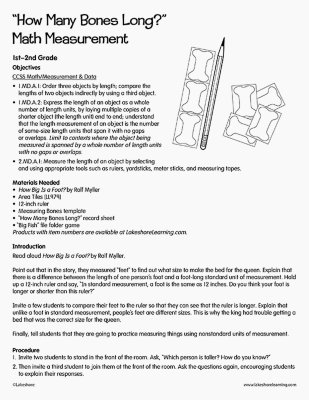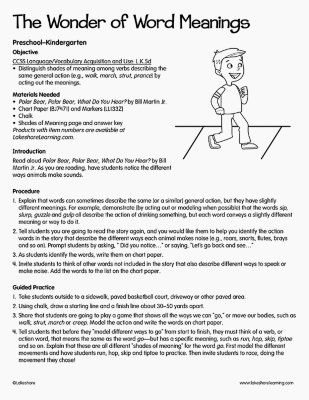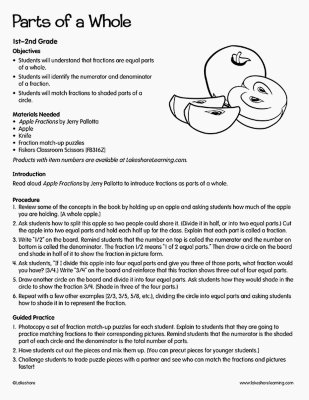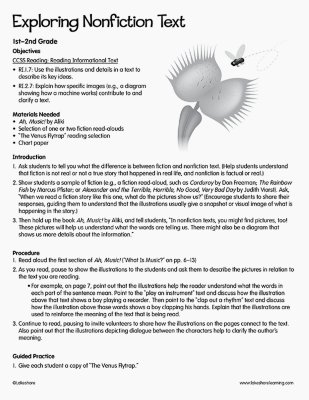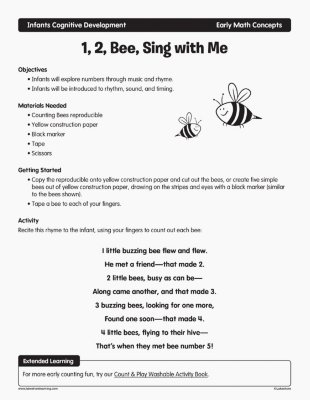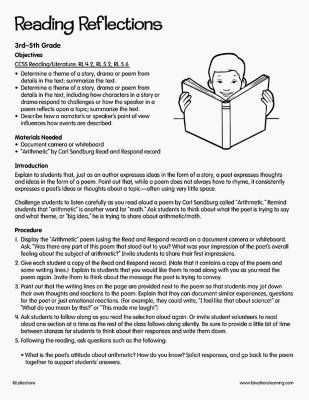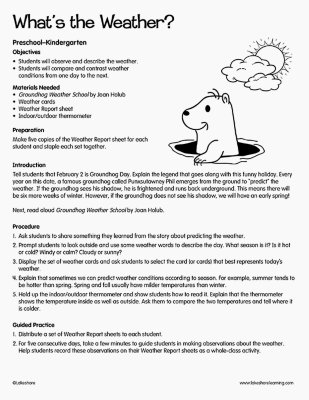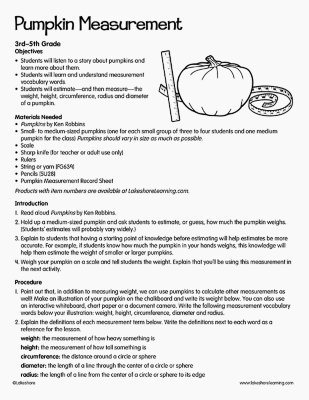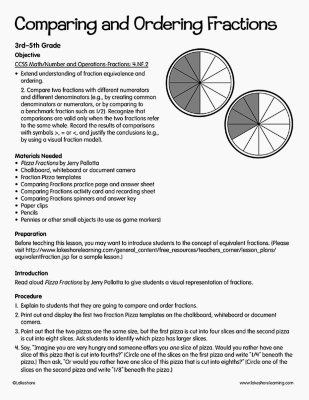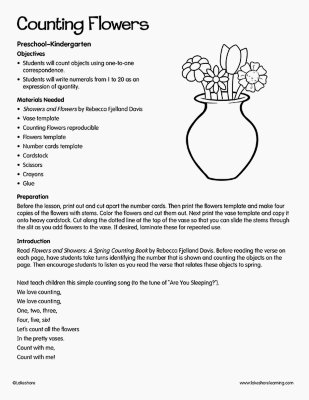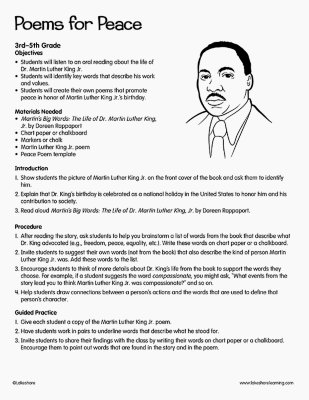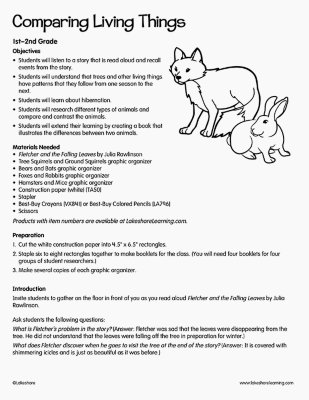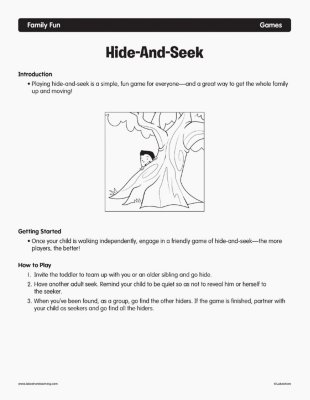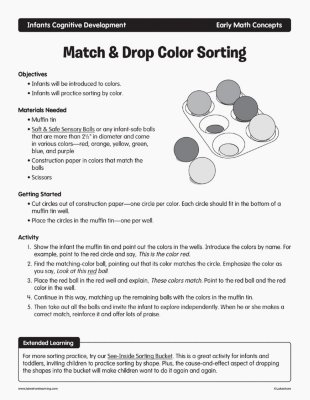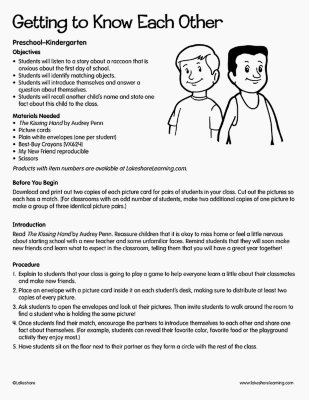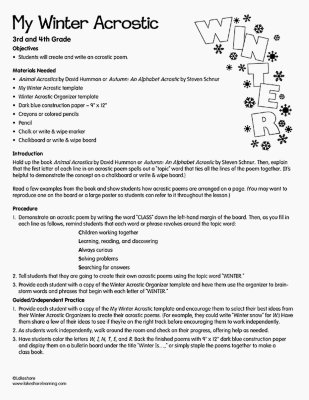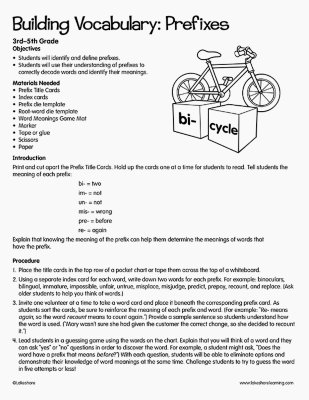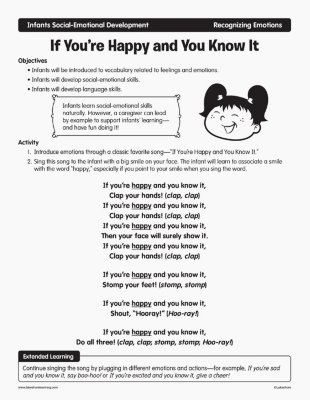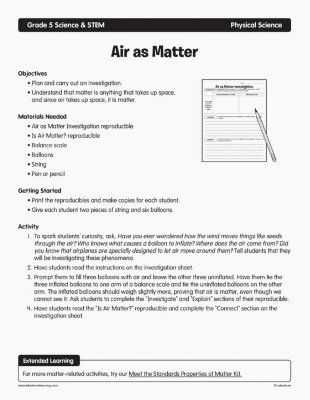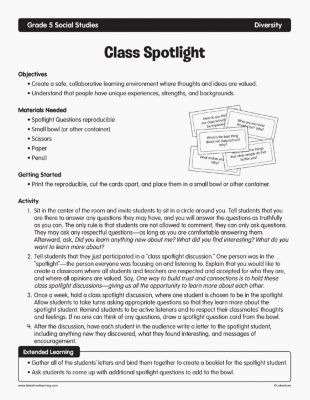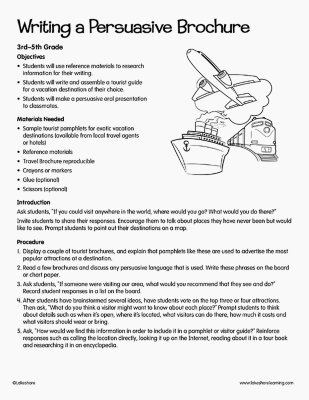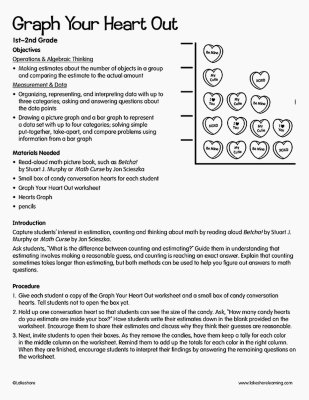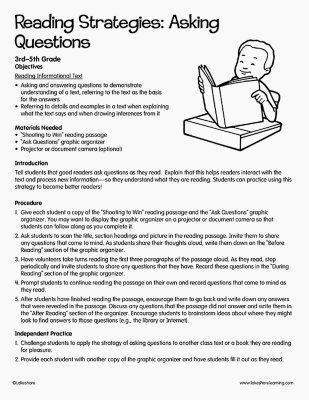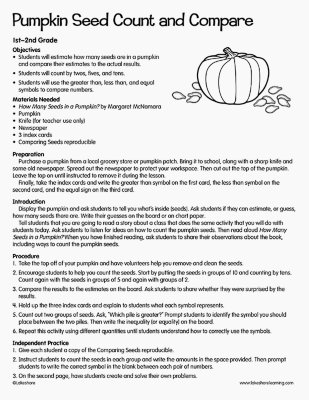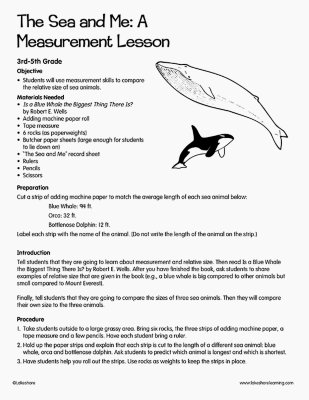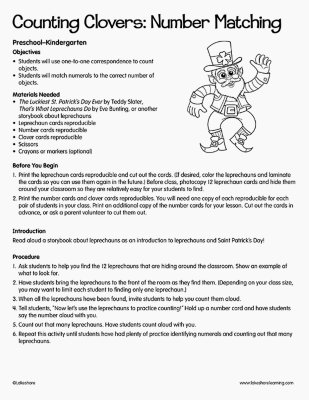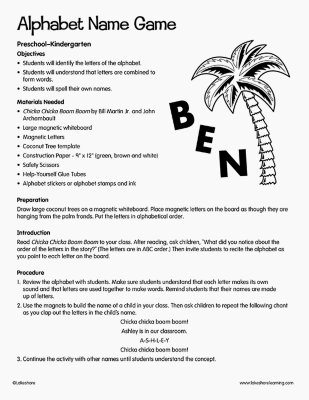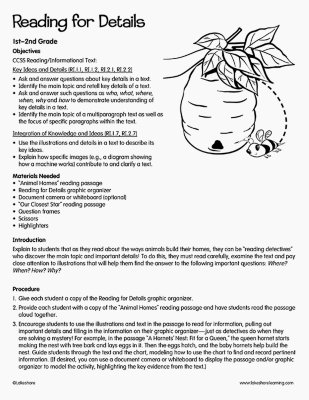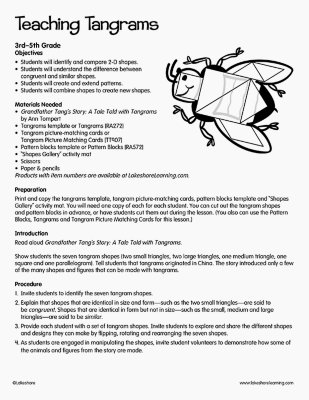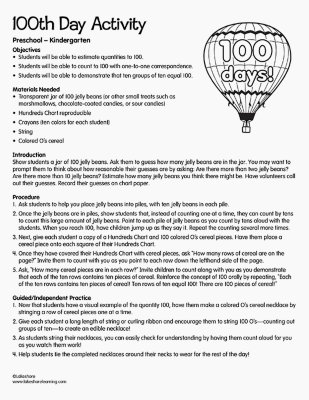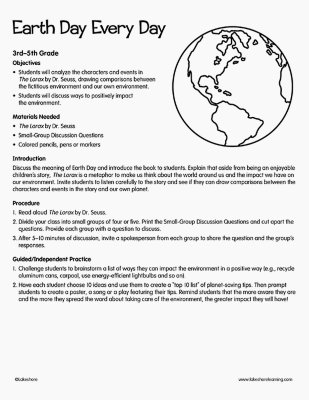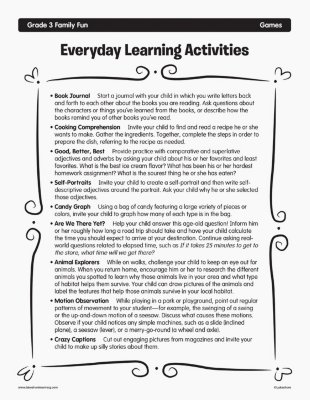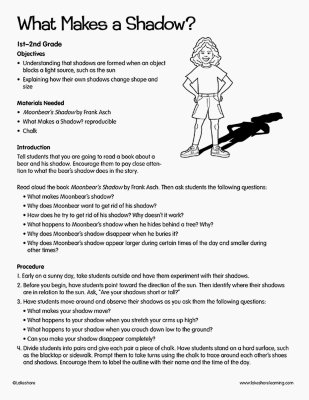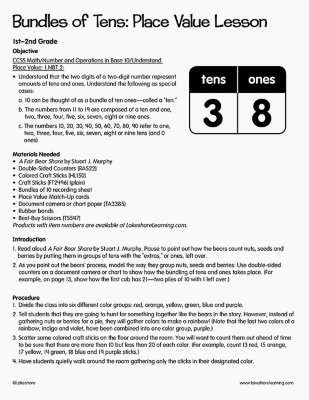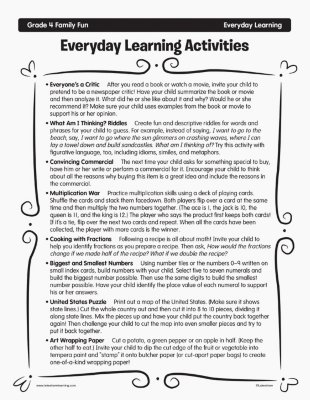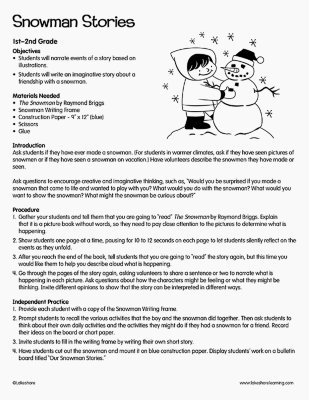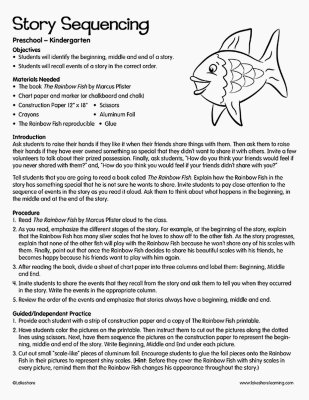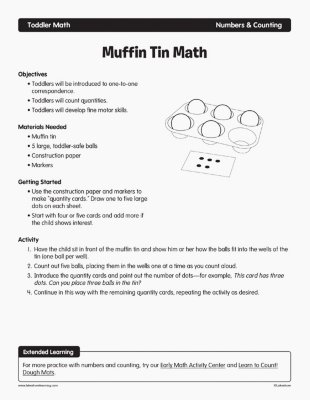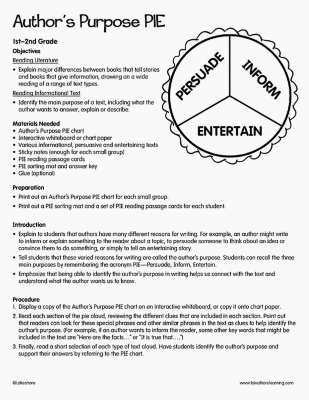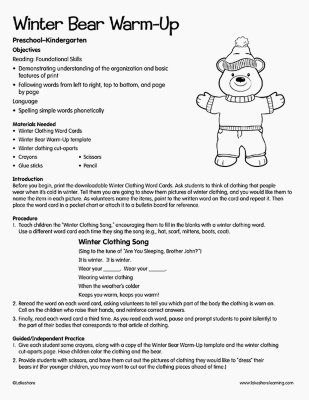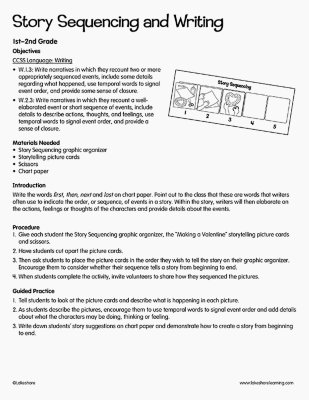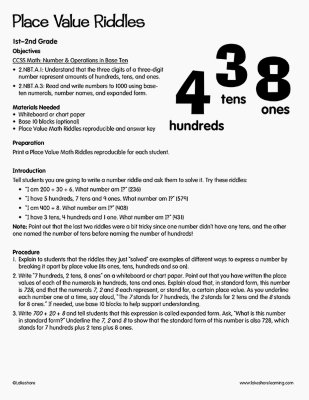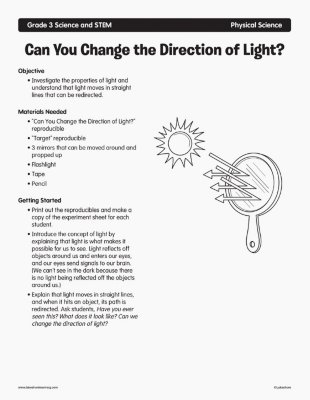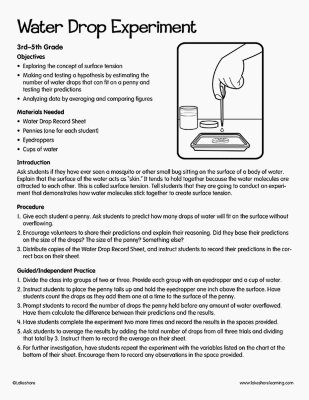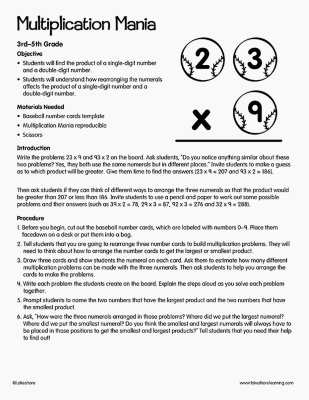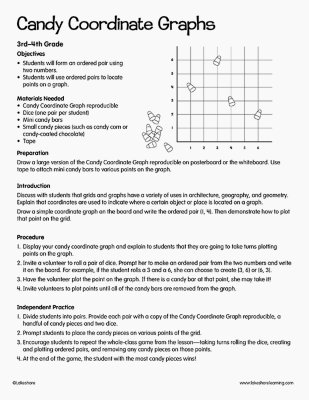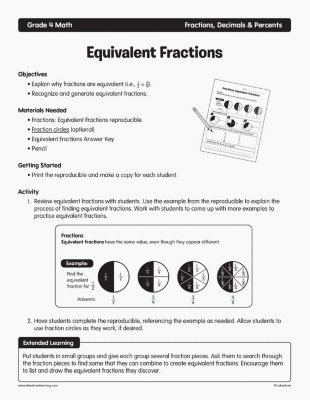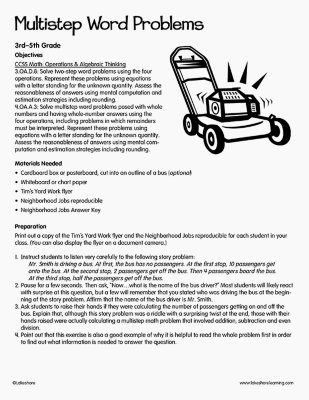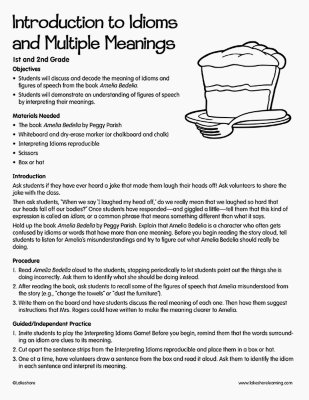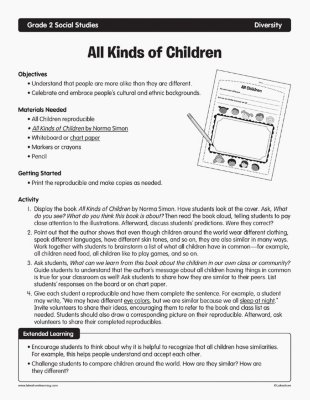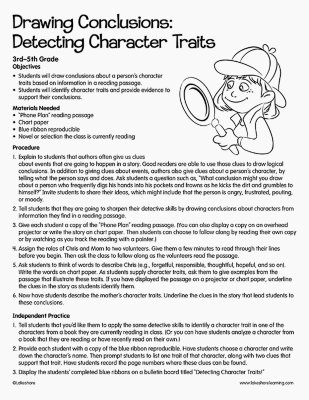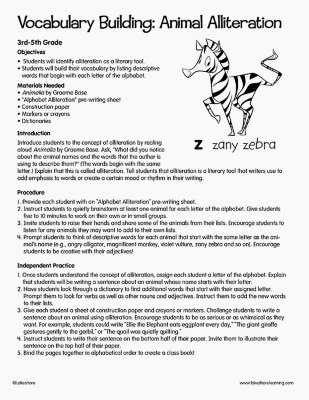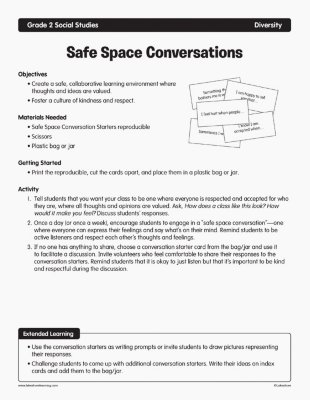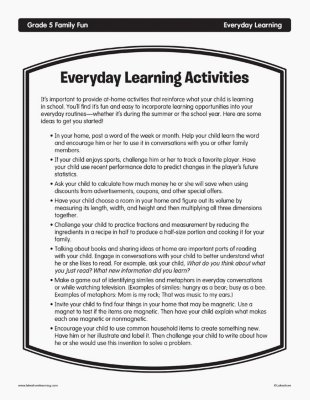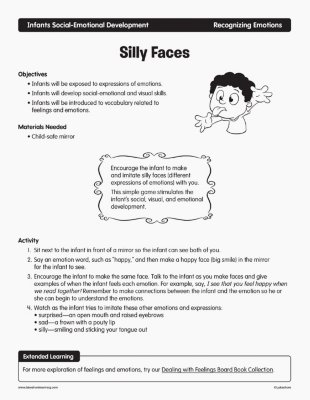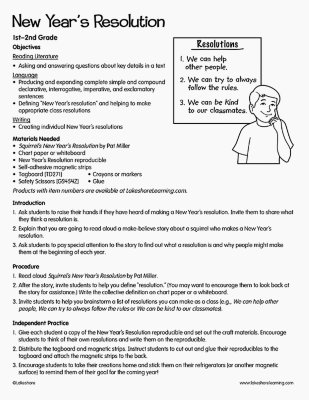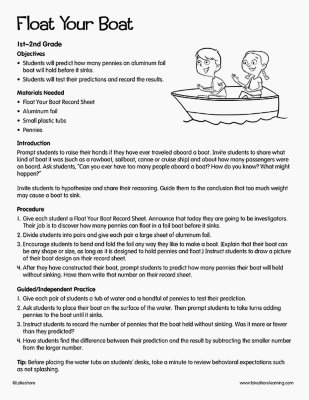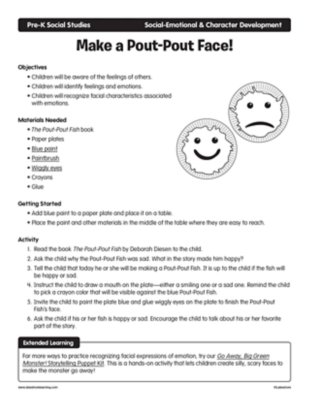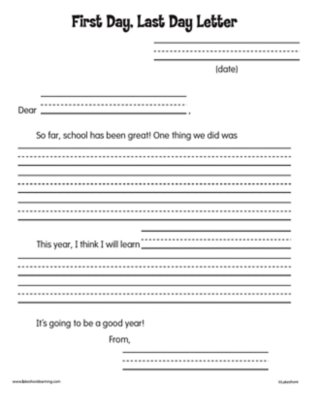Narrow by Grade
Grade
0 results for "art" , here are results for "are"
Objectives
- Bring awareness to one’s own uniqueness, including talents, strengths, and abilities.
- Foster a culture of belonging and inclusion.
Objectives
- Understand that people have unique experiences, strengths, and ideas.
- Explore and incorporate people’s differences to enrich learning.
Objective
- Apply and extend understanding of division to divide unit fractions by whole numbers and whole numbers by unit fractions.
Objective
Objective
• Infants will develop self-esteem and self-confidence.
View Lesson PlanObjectives
• Infants will be introduced to friendship and affection.
• Infants will build vocabulary.
Objective CCSS Math: Counting & Cardinality K.CC.C.6: Identify whether the number of objects in one group is greater than, less than or equal to the number of objects in another group, e.g., by using matching and counting strategies. Materials Needed Document Camera Penguin counters reproducible Colorful winter scarves Paper Classroom Pencils Polar Bear Compare reproducible
View Lesson PlanObjective
- Determine the meaning of a new word formed when a known prefix is added to a known word.
Objectives
- Children will identify feelings and emotions.
- Children will receive emotional support.
- Children will be aware of the feelings of others.
- Children will build friendships.
Objectives
• Toddlers will be exposed to books and print.
• Toddlers will develop language skills.
Objectives
- Understand that even though people are different, they also have a lot in common.
- Foster a culture of belonging and inclusion.
Objectives
- Create a safe, collaborative learning environment where thoughts and ideas are valued.
- Foster a culture of kindness and respect.
Objective
- Learn about different types of communities and be able to describe your community.
Objective Distinguishing shades of meaning among verbs describing the same general action Materials Needed Polar Bear, Polar Bear, What Do You Hear? by Bill Martin Jr. 1½" Ruled Chart Tablet Best-Buy Washable Fine-Tip Markers Chalk Shades of Meaning reproducible and answer key Introduction Read aloud Polar Bear, Polar Bear, What Do You Hear? by Bill Martin Jr. As you are reading, have students notice the different ways animals make sounds.
View Lesson PlanObjectives Students will understand that fractions are equal parts of a whole. Students will identify the numerator and denominator of a fraction. Students will match fractions to shaded parts of a circle. Materials Needed Apple Fractions by Jerry Pallotta Apple Knife Fraction match-up puzzles Fiskars Classroom Scissors Introduction Read aloud Apple Fractions by Jerry Pallotta to introduce fractions as parts of a whole.
View Lesson PlanObjectives
• Infants will explore numbers through music and rhyme.
• Infants will be introduced to rhythm, sound, and timing.
Playing hide-and-seek is a simple, fun game for everyone—and a great way to get the whole family up and moving!
View Lesson PlanObjectives
• Infants will be introduced to colors.
• Infants will practice sorting by color.
Objective
- Participate in physical activities that are enjoyable and challenging, while practicing observation skills.
Objectives
• Infants will be introduced to vocabulary related to feelings and emotions.
• Infants will develop social-emotional skills.
• Infants will develop language skills.
Objectives
- Plan and carry out an investigation.
- Understand that matter is anything that takes up space, and since air takes up space, it is matter.
Objectives
- Create a safe, collaborative learning environment where thoughts and ideas are valued.
- Understand that people have unique experiences, strengths, and backgrounds.
Book Journal Start a journal with your child in which you write letters back and forth to each other about the books you are reading. Ask questions about the characters or things you’ve learned from the books, or describe how the books remind you of other books you’ve read.
View Lesson PlanEveryone’s a Critic After you read a book or watch a movie, invite your child to pretend to be a newspaper critic! Have your child summarize the book or movie and then analyze it. What did he or she like about it and why? Would he or she recommend it? Make sure your child uses examples from the book or movie to support his or her opinion.
View Lesson PlanObjectives
• Toddlers will be introduced to one-to-one correspondence.
• Toddlers will count quantities.
• Toddlers will develop fine motor skills.
Objective
- Investigate the properties of light and understand that light moves in straight lines that can be redirected.
Objectives
- Explain why fractions are equivalent (i.e., 1/2 = 2/4).
- Recognize and generate equivalent fractions.
Objectives
- Understand that people are more alike than they are different.
- Celebrate and embrace people’s cultural and ethnic backgrounds.
Objectives Students will draw conclusions about a person’s character traits based on information in a reading passage. Students will identify character traits and provide evidence to support their conclusions. Materials Needed “Phone Plan” reading passage Chart paper Blue ribbon reproducible Novel or selection the class is currently reading
View Lesson PlanObjectives
• Toddlers will build vocabulary through word repetition.
• Toddlers will build oral language skills.
• Toddlers will be exposed to books and print.
Objectives
- Create a safe, collaborative learning environment where thoughts and ideas are valued.
- Foster a culture of kindness and respect.
It’s important to provide at-home activities that reinforce what your child is learning in school. You’ll find it’s fun and easy to incorporate learning opportunities into your everyday routines—whether it’s during the summer or the school year. Here are some ideas to get you started!
View Lesson PlanObjectives
• Infants will be exposed to expressions of emotions.
• Infants will develop social-emotional and visual skills.
• Infants will be introduced to vocabulary related to feelings and emotions.
Objectives
- Children will be aware of the feelings of others.
- Children will identify feelings and emotions.
- Children will recognize facial characteristics associated with emotions.
